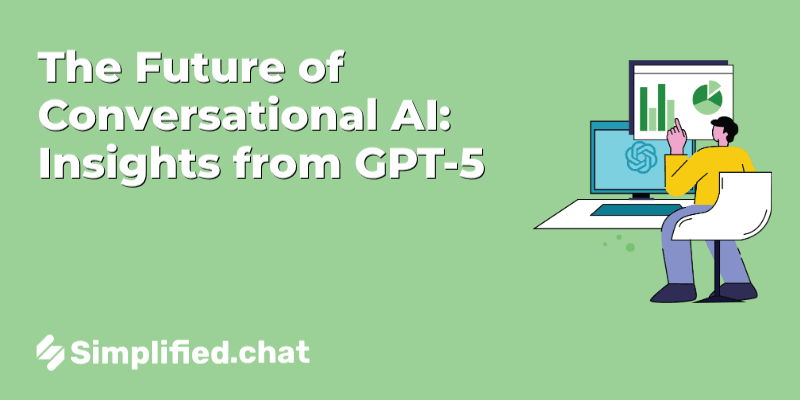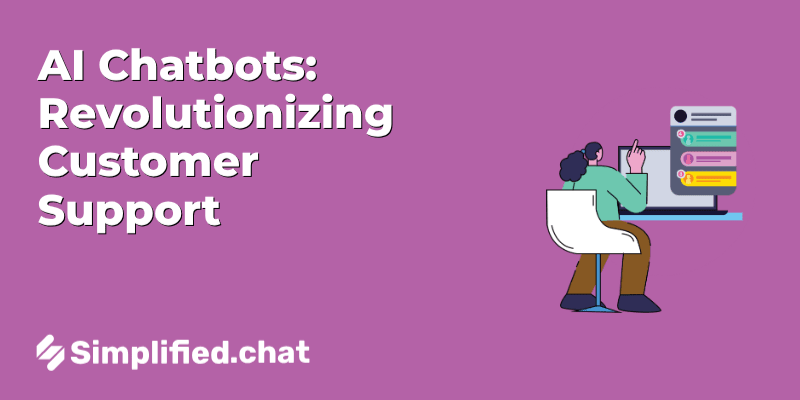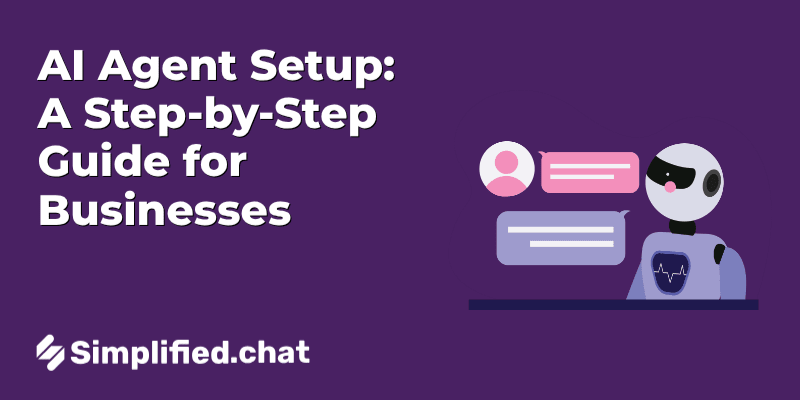Table Of Content
The AI community is filled with excitement as we approach the launch of GPT-5. Each new version has brought significant advancements, and GPT-5 promises to continue this trend. Both enthusiasts and experts are keen to discover the new capabilities and features that this latest version is set to unveil. This article explores the potential impacts and functions of GPT-5. We will delve into how it might influence the world of conversational AI and broader implications of its launch. With improvements in natural language understanding and more sophisticated interactions, GPT-5 is expected to redefine our expectations from AI chatbots.
Expected Release Timeline for GPT-5
Anticipated Release Date: Late 2025
The anticipation surrounding GPT-5 has contributed to many speculations about its release. Current information suggests that we can expect it to arrive sometime between late 2025 and early 2026. Although OpenAI has not disclosed specific dates, hints and updates indicate that this timeline is feasible.
The Interim Models: GPT-4.5
Before GPT-5 debuts, there is an expected interim version, GPT-4.5. This model will likely bridge the gap between GPT-4 and GPT-5, incorporating updates and enhancements. It will offer users improved functionalities while testing some of the features anticipated in GPT-5. The release of GPT-4.5 showcases OpenAI's iterative approach to model development, ensuring that each version brings notable advancements.
Progress Updates and Comments from OpenAI
OpenAI has actively communicated updates on their development journey. Their recent statements emphasize a strong commitment to safety, ethics, and performance within GPT-5's development. The team is dedicated to building a model that goes beyond the capabilities of previous versions while also addressing earlier limitations and user feedback. Comments from OpenAI's leadership highlight their focus on feedback from the AI community and real-world applications. These insights are crucial in refining the upcoming model, reflecting their commitment to continuous evolution.
Breakthrough Technological Advancements in GPT-5
Enhanced Reasoning Capabilities and Improved Reliability
GPT-5 marks a considerable leap in artificial intelligence with its advanced reasoning skills and reliability. Equipped with sophisticated algorithms, GPT-5 can analyze complex scenarios with greater accuracy. This improvement enables it to generate precise, context-aware responses, thereby reducing errors and increasing reliability across various applications.
Integration of Multi-Modal Functionalities
A standout feature of GPT-5 is its integration of multi-modal functionalities. This means that GPT-5 isn't limited to processing and generating text; it can also interpret and respond to images and videos. This capability opens new avenues for AI chatbots and other applications, creating a comprehensive approach to problem-solving and information retrieval. For example, a user could upload a picture along with their question, and GPT-5 would generate an informed, contextually relevant response.
Introduction of Autonomous AI Agents for Real-World Task Management
With GPT-5, we see the introduction of autonomous AI agents that can manage real-world tasks without constant human oversight. These agents can handle a variety of activities, from customer service to data analysis, allowing human resources to focus on more strategic and creative endeavors. The deployment of these autonomous capabilities represents a significant moment in AI's applications, indicating a future where AI is a seamless part of daily life and work.
Expanded Context Windows: Significance and Benefits
One notable advancement in GPT-5 is the incorporation of expanded context windows. These larger context windows allow the AI to process and comprehend more extensive information, greatly improving its performance.
Explanation of Larger Context Windows in GPT-5
In AI, context windows refer to the amount of text or data the model can consider while generating predictions or responses. GPT-5 has increased these windows, allowing it to manage larger chunks of text in one go. This development enhances the handling of complex information and leads to a more cohesive understanding.
Impact on Information Processing and Comprehension
The larger context windows significantly influence how the AI processes information. By gaining a wider perspective on the text, GPT-5 can better identify patterns and relationships among information pieces. This results in improved comprehension and a more responsive conversational ability, as the AI can track longer discussions and maintain context throughout extended interactions.
Examples of How Expanded Context Windows Improve AI Interactions
Expanded context windows lead to marked improvements in various AI interactions. Here are a few examples:
- In customer service, the AI can remember prior interactions with customers, offering a more personalized experience by referencing past issues or questions.
- For content creation, the AI can manage lengthy documents better, ensuring the produced content is cohesive and maintains a consistent tone.
- In educational scenarios, the AI can deliver more detailed responses to complex inquiries by synthesizing information from a broader scope of reading materials.
The expanded context windows in GPT-5 represent a notable advancement in AI capabilities, making interactions richer and more context-aware.
Subscription Model and Pricing
The subscription model for GPT-5 aims to provide flexibility and options for a variety of users. Here’s an overview of the expected structure and a comparison with previous versions:
Overview of the Expected Subscription Model for GPT-5
GPT-5 will likely continue with a tiered subscription model, similar to its predecessors, to cater to diverse user needs and budgets. Different tiers will grant access to varying levels of service, features, and support. Here’s a brief look at the anticipated tiers:
- Basic Tier: Access to fundamental features with limited API requests per month, ideal for individual users or small-scale projects.
- Standard Tier: Improved capabilities, higher API request limits, and priority support, suitable for small to mid-sized businesses and developers.
- Premium Tier: Full access to all features, maximum API request limits, dedicated support, and advanced analytics, perfect for large enterprises and intensive applications.
Comparison with Previous Pricing Structures of GPT Models
The pricing structure for GPT-5 is expected to follow a similar pattern to GPT-3 and GPT-4, but updates may reflect the new features and capabilities. Here are some key comparisons: GPT-3 had a straightforward tier-based model, while GPT-4 introduced nuanced pricing plans based on usage intensity and additional support services. GPT-5 may refine these offerings by potentially introducing:
- More detailed pricing models that scale according to usage
- Specific tiers designed for particular industries or use cases
- Options for add-ons and customization to address unique user needs
Potential Pricing Variations and Their Implications for Users
As pricing structures evolve, users will have to assess their specific needs and usage patterns to choose the most suitable plan. Here are potential variations and their implications:
- Flexible, pay-as-you-go models to handle unpredictable usage
- Subscription discounts for educational institutions and non-profit organizations
- Enterprise options with bulk pricing and customized support for large implementations
The goal is to ensure GPT-5 remains accessible to a wide range of users while also providing robust features and support for those with more demanding requirements.
Artificial General Intelligence (AGI) Speculations
Exploration of Whether GPT-5 Could Bring OpenAI Closer to AGI
Artificial General Intelligence (AGI) refers to the capability of an AI system to learn and apply knowledge across diverse tasks, achieving cognitive performance comparable to that of humans. With the advancement of AI technology, there is increasing curiosity about whether GPT-5 could bring us closer to achieving AGI. GPT-5 is set to build on the abilities of its predecessors, showcasing more advanced language processing, contextual understanding, and adaptive responses. While it brings impressive improvements, the crucial question remains: will these advancements be enough to bridge the gap to AGI?
Discussion on the Advancements Towards AGI
The path towards AGI is characterized by incremental advancements in AI algorithms, neural networks, and machine learning methodologies. Each iteration of GPT has marked a significant evolution in AI capabilities. GPT-3 demonstrated the ability to produce text indistinguishable from human writing in many contexts, while GPT-4 introduced enhancements in nuanced understanding and coherence. With GPT-5, there is optimism surrounding further developments in:
- Contextual comprehension: Understanding intricate queries and providing more relevant responses.
- Domain adaptation: Increased capacity to tailor replies based on specific fields or industries.
- Interactive learning: Enhanced mechanisms for learning from engagement and feedback.
- Task versatility: Ability to manage a wider range of tasks beyond conversational AI.
Ethical Considerations and Potential Impacts of AGI
The approach towards AGI raises substantial ethical considerations and social implications. As we come close to creating machines with human-like cognitive skills, several key issues must be addressed:
- Bias and fairness: Ensuring AGI systems avoid biased decisions and promote fair treatment.
- Privacy: Tackling concerns surrounding data security and protection of personal information.
- Autonomy: Discussing the extent to which AGI should operate independently.
- Employment: Analyzing the impact of AGI on job markets and workforce dynamics.
While the pursuit of AGI is an exciting scientific endeavor, it is crucial to balance technological growth with ethical responsibility to maximize benefits while minimizing potential risks.
Business Implications: Transforming Industries with GPT-5
The introduction of GPT-5 carries significant implications for businesses across multiple industries. Its capabilities extend beyond simple conversation management, heralding a new era of AI-driven operations. In this section, we will discuss how GPT-5 supports autonomous customer service AI agents, enhances workflow, and its practical uses across various sectors.
Autonomous Customer Service AI Agents
Customer service is vital for any business, and GPT-5 takes autonomous customer service AI agents to new levels of functionality and interaction. These agents can accurately interpret and respond to customer inquiries, providing a personalized experience. With ongoing learning capabilities, GPT-5-enabled agents can address a wide range of questions, from simple queries to complex issues, without human assistance. This capability allows businesses to assign human resources to tasks that require deeper decision-making.
Improvements in Workflow Automation and Operational Efficiency
A significant advantage of GPT-5 is its ability to automate workflows and improve operational processes. Incorporating GPT-5 into business functions allows organizations to automate mundane tasks, enabling employees to concentrate on strategic initiatives. GPT-5 can assist with: Generating reports and summaries. Managing and organizing emails. Scheduling and maintaining calendars. Analyzing data and providing insights. This positive influence on workflows simplifies daily operations, reducing errors and boosting overall productivity.
Practical Applications Across Different Industries
The adaptability of GPT-5 enables its application in various sectors, each utilizing its features to meet specific demands.
Healthcare
Within healthcare, GPT-5 supports early diagnosis through patient data analysis, provides virtual health assistants, and aids doctors with accurate medical history and symptom research.
Finance
In finance, GPT-5 analyzes market trends, delivers financial advice, automates trading, and helps detect fraud through pattern recognition.
Retail
Retailers can incorporate GPT-5 to boost customer engagement with personalized shopping experiences, manage inventory, and analyze trends for better demand forecasting.
Education
In education, GPT-5 enables personalized tutoring, assists in content creation, automates administrative duties, and provides insights grounded in student performance data. Overall, GPT-5’s capabilities are diverse, making it an essential resource for businesses seeking growth and development within their industries. As sectors increasingly adopt GPT-5, the potential for growth remains vast.
Conclusion
In reviewing the advancements and potential of GPT-5, it’s clear that this conversational AI has the power to change the landscape of human-machine interactions. From its enhanced language processing to its improved contextual understanding, GPT-5 is set to redefine communication with AI technology. The insights indicate that businesses can achieve better customer interactions and operational results through integrating GPT-5.
Encouragement for Businesses
Businesses should begin preparing to incorporate GPT-5 into their operations. With this technology, they can maintain a competitive advantage. Whether improving customer service or streamlining internal processes, adopting GPT-5 presents a valuable opportunity. Preparation for GPT-5 involves understanding its features and beginning to test and integrate them into daily operations.
Companies should initiate automating routine tasks with GPT-5 and explore its impact on enhancing operations. By utilizing its capabilities, organizations can allocate valuable time to more strategic activities. Automation is just one aspect of GPT-5; organizations should continuously look for ways to incorporate its wide-ranging features into different aspects of their operations. The implications of GPT-5 on conversational AI are extensive. With technology continually evolving, staying informed and proactive is essential for sustaining growth and development. Explore the capabilities of GPT-5 now and prepare your business for a promising future with AI-driven solutions.
Frequently Asked Questions About GPT-5
Common Questions About GPT-5's Capabilities and Release
As anticipation for GPT-5 builds, many questions have arisen regarding its capabilities and release timeline. Here, we answer some of the most common inquiries to provide clarity and insight.
When is GPT-5 expected to be released?
While an exact release date for GPT-5 isn't available, experts estimate it will be launched in late 2025. This prediction is based on previous development cycles and recent advancements in AI technology.
What improvements can be expected in GPT-5 compared to GPT-4?
Users can anticipate considerable improvements with GPT-5 over its predecessor. Expectations include better contextual understanding, more nuanced language generation, and increased adaptability across various applications. Additionally, GPT-5 seeks to address biases and enhance the ethical use of AI systems.
Will GPT-5 support more languages?
Yes, expanding its multilingual capabilities is a key focus for GPT-5. The model aims to support a wider array of languages, appealing to a broader global audience and enabling diverse applications.
Answers to Concerns Related to the Implementation and Use of GPT-5
Transitioning to a new AI model often raises implementation and usage concerns. Here are some insights to address common issues users might have.
What are the potential ethical issues with using GPT-5?
Like its predecessors, GPT-5 may encounter ethical challenges such as data privacy, algorithmic bias, and misuse of generated content. Developers continue to focus on incorporating robust safeguards and ethical guidelines to address these challenges.
How can businesses integrate GPT-5 into their existing systems?
Integrating GPT-5 into current systems can be straightforward with the APIs and development tools provided. Organizations should plan for a gradual integration process, employee training, and regular updates to guarantee optimal performance and security.
Is GPT-5 suitable for small businesses and individual users?
Definitely. GPT-5 is designed for versatility and accessibility, accommodating various users from large enterprises to small businesses and individuals. Its user-friendly design and customizable features make it a valuable tool for different applications, including content creation and customer service. By addressing these frequent questions and concerns, we aim to clarify GPT-5 and prepare users for its integration and use in their respective fields.
Empower Your Business with Simplified AI Chatbot
Build Your Own AI ChatbotBuild Your First AI Agent Today
Build, train, customize and deploy your first AI chatbot in minutes




